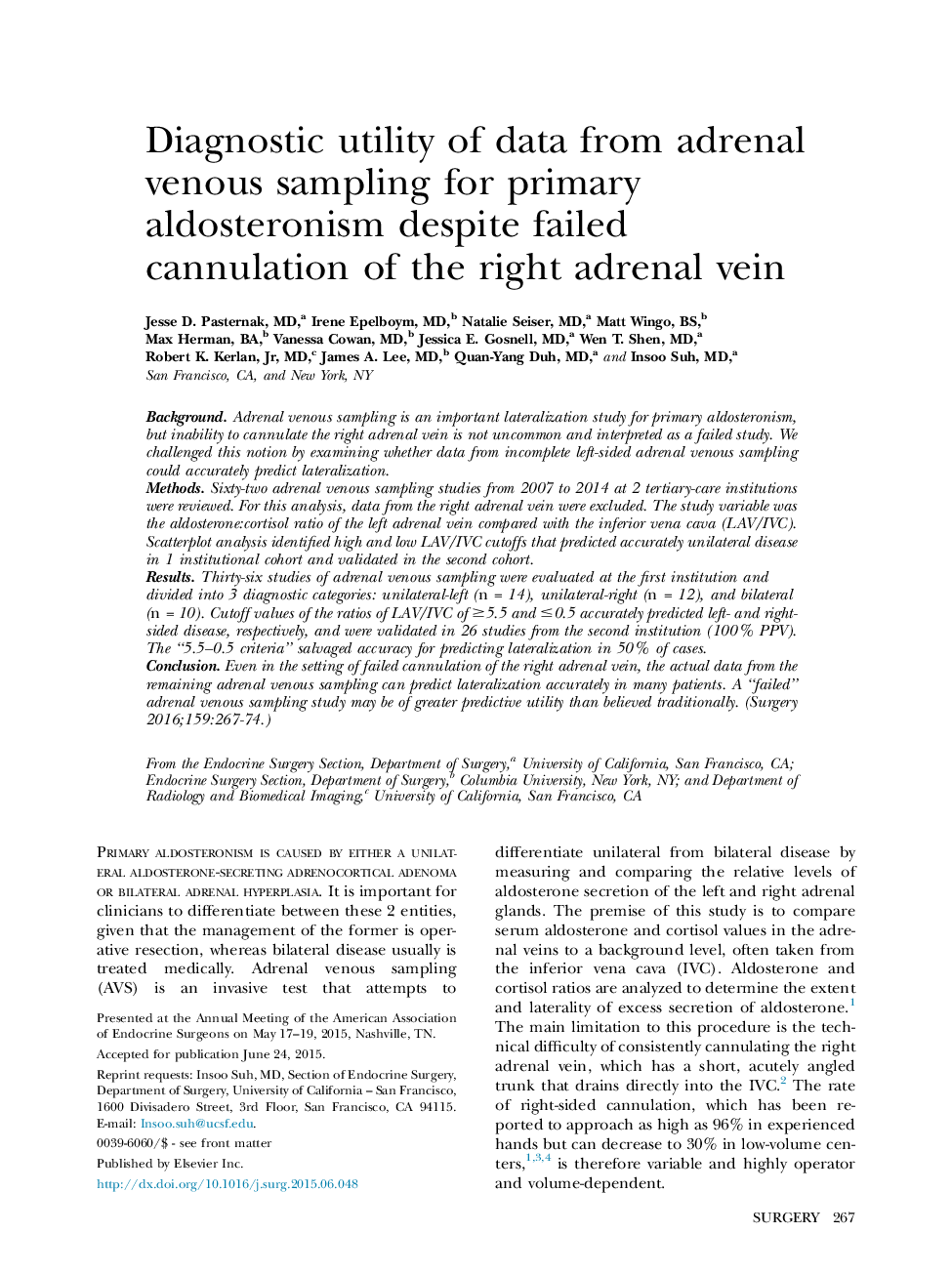| Article ID | Journal | Published Year | Pages | File Type |
|---|---|---|---|---|
| 4306657 | Surgery | 2016 | 8 Pages |
BackgroundAdrenal venous sampling is an important lateralization study for primary aldosteronism, but inability to cannulate the right adrenal vein is not uncommon and interpreted as a failed study. We challenged this notion by examining whether data from incomplete left-sided adrenal venous sampling could accurately predict lateralization.MethodsSixty-two adrenal venous sampling studies from 2007 to 2014 at 2 tertiary-care institutions were reviewed. For this analysis, data from the right adrenal vein were excluded. The study variable was the aldosterone:cortisol ratio of the left adrenal vein compared with the inferior vena cava (LAV/IVC). Scatterplot analysis identified high and low LAV/IVC cutoffs that predicted accurately unilateral disease in 1 institutional cohort and validated in the second cohort.ResultsThirty-six studies of adrenal venous sampling were evaluated at the first institution and divided into 3 diagnostic categories: unilateral-left (n = 14), unilateral-right (n = 12), and bilateral (n = 10). Cutoff values of the ratios of LAV/IVC of ≥5.5 and ≤0.5 accurately predicted left- and right-sided disease, respectively, and were validated in 26 studies from the second institution (100% PPV). The “5.5–0.5 criteria” salvaged accuracy for predicting lateralization in 50% of cases.ConclusionEven in the setting of failed cannulation of the right adrenal vein, the actual data from the remaining adrenal venous sampling can predict lateralization accurately in many patients. A “failed” adrenal venous sampling study may be of greater predictive utility than believed traditionally.
